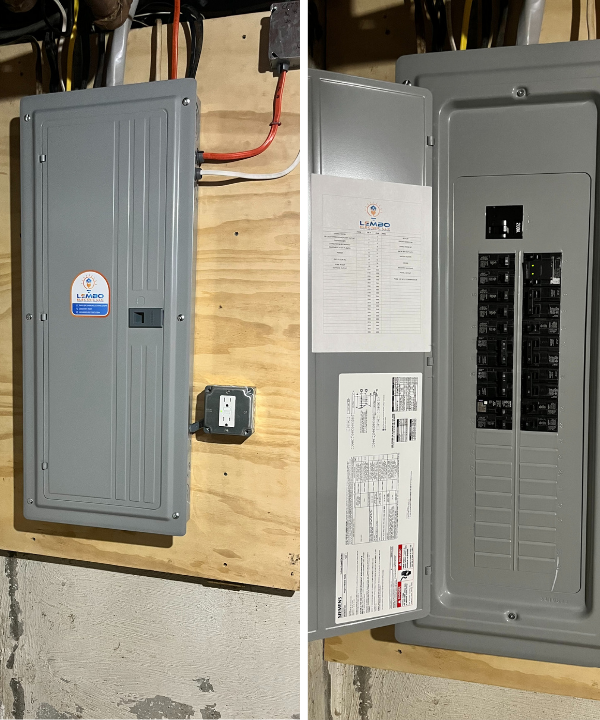Lembo Electric services
ELECTRICAL PANELS
Electrical Panel Upgrades & Service

Why Upgrade?
- Outdated Panels: Older panels may not handle the increased demand of modern appliances, HVAC systems, or electric vehicles.
- Safety: Old or faulty panels can pose a risk of electrical fires, power surges, or other hazards.
- Capacity: Newer panels provide more circuits and higher amperage to support new electrical needs.
- Code Compliance: Panel upgrades may be required to meet current electrical codes, especially during home renovations or additions.
When Should You Upgrade?
- Home Renovation: Adding new appliances, outlets, or dedicated circuits like for EV chargers.
- Frequent Tripped Breakers: If circuits trip regularly, it indicates overloading.
- Increased Energy Usage: New HVAC systems, electric vehicles, or home additions demand more power.
Flickering Lights/Voltage Drops: These signs often indicate an overloaded or failing panel.
Types of Electrical Panels
Main Breaker Panel
Purpose:
Controls the power supply to your entire home.
Includes:
A main disconnect switch and individual circuit breakers.
Use:
Standard for most homes — protects and distributes power to all circuits.
Main Lug Panel
Purpose:
Similar to a main breaker panel but does not have a main disconnect switch.
Use:
Often used as a sub-panel (secondary panel) or in multi-unit buildings.
Note:
Requires a main breaker upstream (like in the main panel).
Sub-Panel
Purpose:
Extends power from the main panel to another part of a property (garage, workshop, addition).
Use:
When the main panel doesn’t have enough room or when separating areas by circuit.
Note: Fed from the main panel. Has its own breakers.
Transfer Switch Panel
Purpose:
Connects a backup generator to your home’s electrical system.
Types:
Manual or automatic.
Use:
Essential for homes with generators to safely switch between grid and generator power.
Choosing the Right Panel
- 100 Amp: Small homes or apartments with low power needs.
- 150–200 Amp: Standard for modern homes (can handle HVAC, appliances, EV charging, etc.).
- 400 Amp: Large homes or homes with workshops, multiple HVACs, or high electrical demand.
